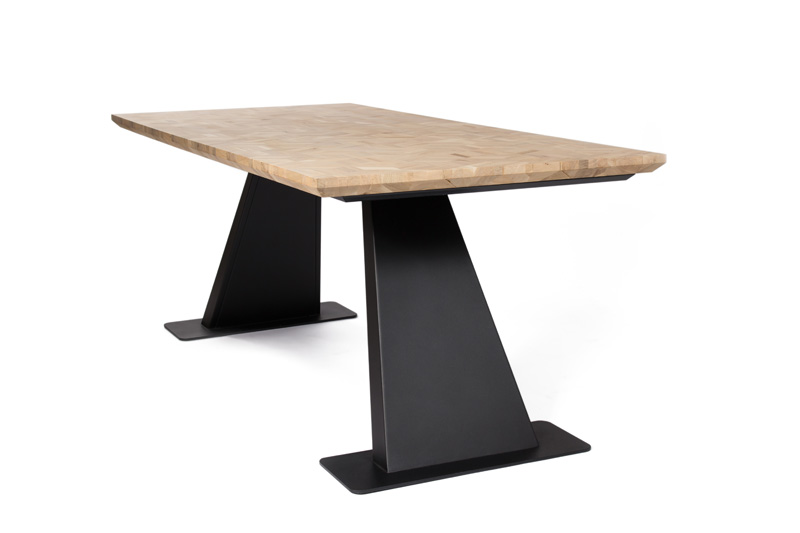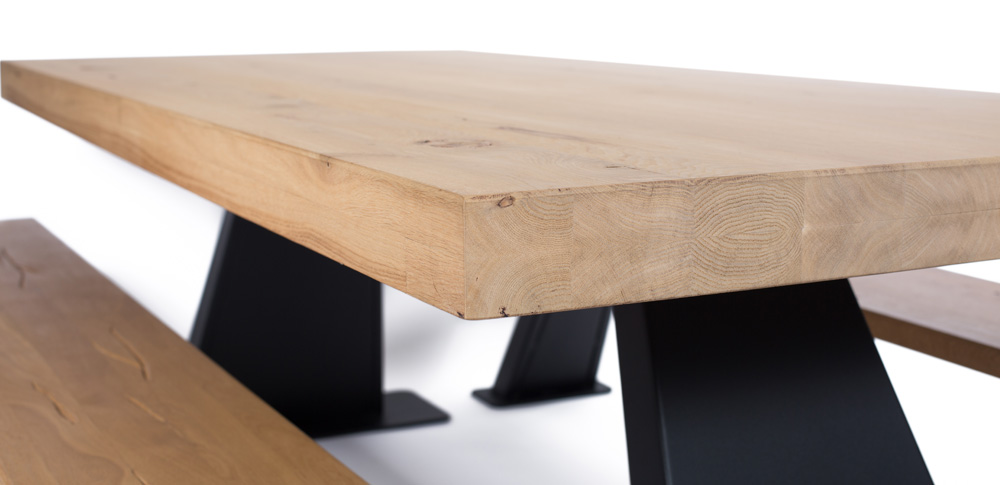When it comes to deciding which type of furniture best suits you home, you might find yourself in the situation of having to choose between solid wood and wood veneer. But which one is better, which one should you choose? Veneering dates back to the Egyptian times when veneers were used on the sarcophagi and furniture. In modern woodworking, the veneers are actually thin pieces of wood that are glued onto core panels which can then be used for a wide range of purposes. A piece of veneer is nowadays created either by “peeling” the trunk of a tree or by slicing blocks of wood.
Solid wood furniture – advantages
Solid wood has become the most expensive and desirable option. It can send a strong message to your customers, if you own a business, but it can also bring a fresh new look to your home. If your budget is flexible and you’re looking for furniture that will last for decades to come, solid wood is the ideal option for you. A few advantages of using solid wood is that it provides durability and stability. The design created is more secure and easier to repair. Also, there are limitless color options. You will surely find one that to accommodate your personal style or office. Solid wood is easy to refinish, easy to sand and stain should you ever wish to give it a new look. So you don’t need to rethink your whole furniture set and buy a new one, you can just give this one a fresh new look.
Disadvantages of solid wood
It’s cost-effective. It does offer a clear value, but at the same time it comes with higher prices and it may not always be within your budget. Solid wood furniture is also heavier an bulkier, and not easy to move around the house should you wish to rethink your space. So, if you are planning on moving offices very often, solid wood may not be the ideal option for you at this time. It’s also not completely invincible. Even if you touch it up with polish or wax every now and again, solid wood is still susceptible to warping, especially when it comes to flat panels.
What about wood veneer?


The practice of making wood veneer allows furniture makers to build furniture pieces at a lower cost. Veneer can be sanded, painted and stained because it is a real wood, even if just a thin layer. You have to be careful about removing too much material, but you can still give your item an updated look. Scratches and stains may also be buffed out. Veneer furniture is more resistant to warping than solid wood, and sometimes panels of it are incorporated into pieces that also include solid wood components. Using veneers allows the crafstman to create an entire surface from just one tree, by matching grains. This can’t really be said about solid wood. Last, but not least, veneers are easy to be maintained. They love the microfiber cloths and the usual furniture polish.
The cons of wood veneer
Some people might argue that it is not real wood, and they do have a point. Veneer products are affordable, beautiful and durable, but they will never be like solid wood. Veneer is also susceptible to water damage. If moisture steeps under the veneer, it can loosen the top layer. This can result in buckling and bubbles, so you need to take extra care when maneuvering water recipients in the proximity of your furniture.
As a conclusion, both types of furniture have advantages an disadvantages. If you’re still unsure of which one to go for, contact us for a no-obligation on-site consultation, or give us a call at 020 7060 0870 and we will help you achieve the best looks your house can have within your own personal budget.


